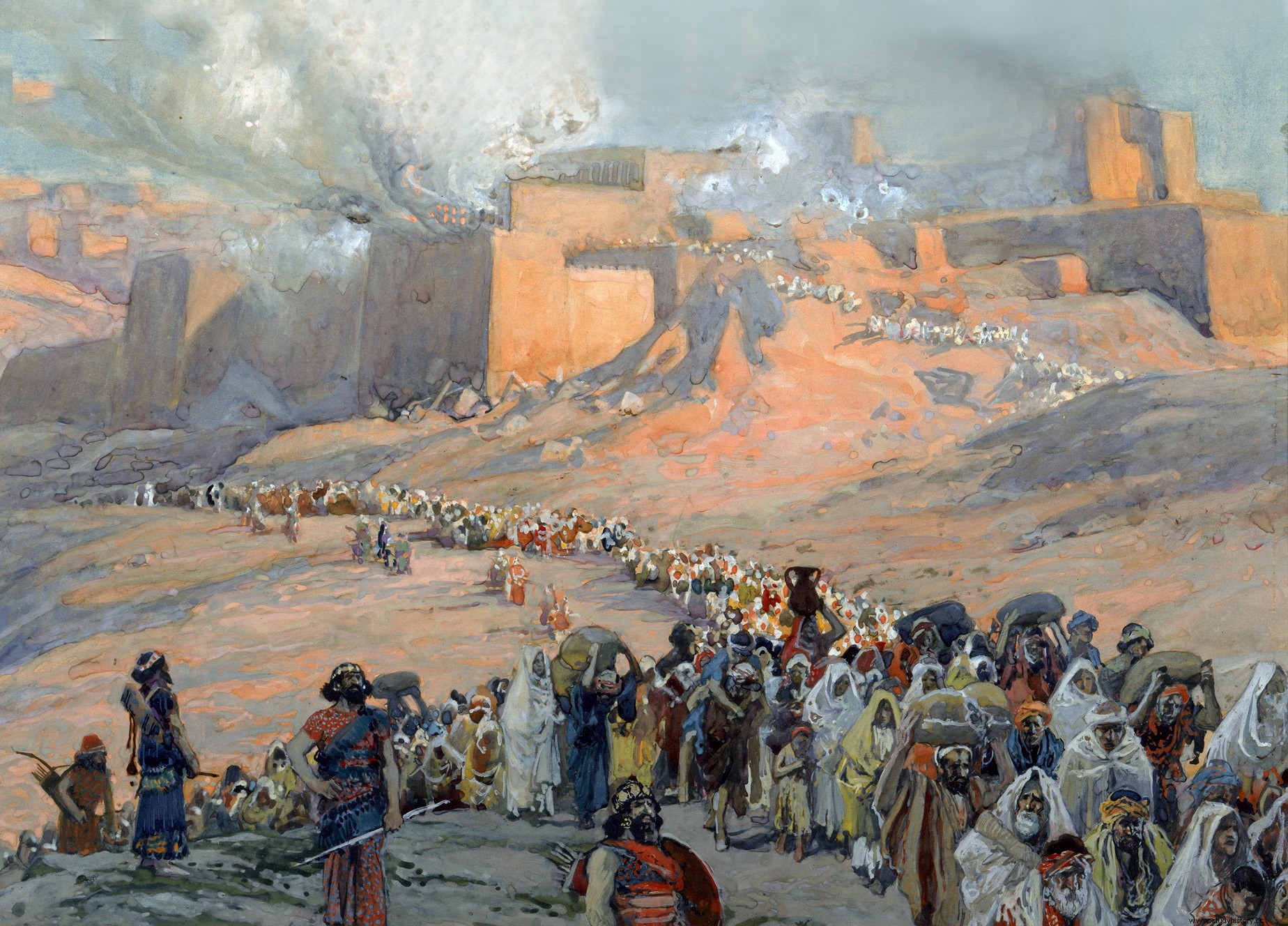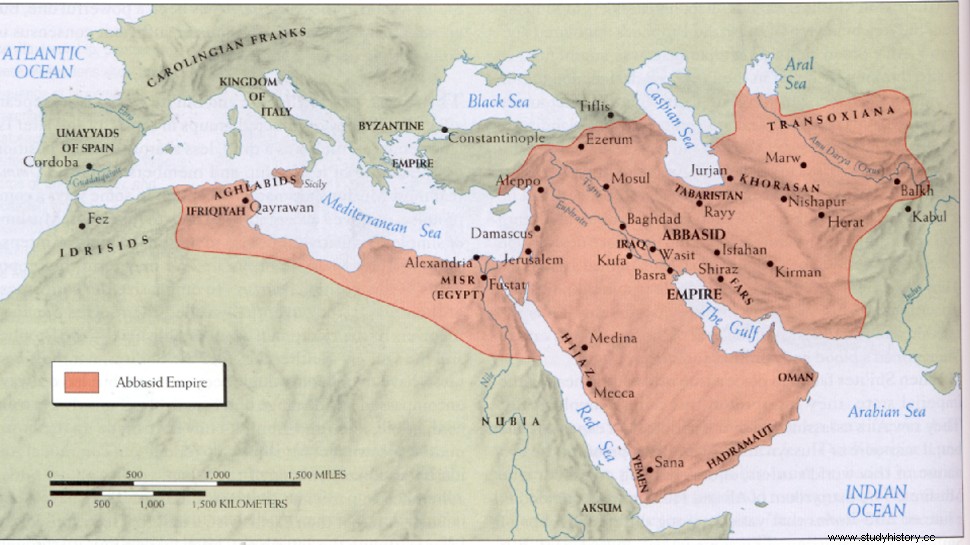In the year 818, the Cordovans of the suburb (from the Arabic, al-rabad , suburb), located on the left bank of the Guadalquivir, took to the streets to protest the murder of a neighborhood swordsman at the hands of a soldier from the emir's personal guard. It seems that the soldier was not very satisfied with the craftsman's work and, after an argument, ran him through with his sword. Actually, this incident was the straw that broke the camel's back after years of contempt for being considered second-class citizens and several tax increases decreed by the emir of Córdoba, Al-Hakam I . Things escalated and, when the emir arrived in Córdoba after a day of hunting, the initial protest was taking on overtones of rebellion. And Al-Hakam, who liked to fix things by pulling a cutlass -see «A night in Toledo«-, ordered the neighborhood to be assaulted. For 3 days, the emir's troops worked hard:the neighborhood was set on fire and razed to the ground, more than 3,000 Cordovans were killed -300 of them crucified- and the rest of the inhabitants, more than 20,000, had to flee from Córdoba -it was called the slaughter of the suburb -. Most of them crossed the strait, some settled in the city of Fez (in what is now Morocco) where they founded a neighborhood called Madinat al-Andalusiyyin , "the city of the Andalusians or Andalusians" and others... this is the adventure of the rabadíes Cordovans (inhabitants of the suburb).

Another important contingent of exiles traveled to the eastern Mediterranean and settled in the vicinity of Alexandria, and there they knew how to take advantage of the circumstances. In 809, after the death of Harun al-Rashid , the caliph of the Abbasid dynasty of Baghdad, immortalized in the work «The thousand and one nights «, The disputes between his descendants to occupy his position weakened the central power of Baghdad and encouraged social and political revolts in different parts of the caliphate. And one of them was Alexandria. When the Rabadis arrived, they found themselves in the middle of a dispute over the city between the Abbasids and North African Berber tribes. They knew how to join the winning horse, the Berbers, and took over Alexandria. Little by little they were gaining ground and removing the North Africans from power until they took control of the city. For almost 10 years, Alexandria was a kind of independent Republic of Cordoba in the middle of a territory controlled by the Abbasids. Knowing that this situation was unsustainable, in 827 they accepted the proposal of the caliph Al-Mamun , son of Harún al-Rashid and more given to negotiation than to war. If he gave them the city, he would allow them to leave it with all their belongings and would provide them with ships. In addition, he offered them a new destination to settle:the island of Crete.

Harun al-Rashid
The island of Crete did not belong to the Abbasid Caliphate, but to the Byzantine Empire, its great rival in the eastern Mediterranean, but Al-Mamun knew how to play his cards so that the Rabadis would seize it. In another example of his art in the field of negotiation, the caliph had a decisive influence in destabilizing the Byzantine Empire by supporting the rebellion of Thomas the Slav , a military man who had the support of part of the army and who was even crowned by the patriarch of Antioch. Although Thomas was finally defeated by the "official" emperor Michael II, the instability created was taken advantage of by the rabadi contingent (40 ships provided by the caliph and about 10,000 people) to take the island without much trouble. And they are here to stay.

Abbasid Caliphate
Leading the Cordovans was Abú Hafs Umar al-Ballutí (El Bellotero), so called because he was born in the region known as Fash al-Ballut (Llano de las Bellotas) -today, Los Pedroches (Córdoba)-. founder of a hereditary Cordovan dynasty that remained independent until 961. Logically, it is impossible to endure almost a century and a half in foreign territory without organizing. The Cordovans founded Khandaq -later Candia and currently Heraklion-, a fortified city surrounded by a moat, which served as the capital, and from where the island was governed. They minted their own currency, exploited the mines, acclimatized to the island crops that were not their own, such as sugar cane or cotton, implanted silkworm breeding and the silk industry, the artisans gave free rein to their imagination... they were able to create a flourishing civilization, economically and culturally, in the image and likeness of their native Andalusian Córdoba. Once the internal policy was organized, to stop the continuous harassment of the Byzantines and break the attempts to leave them isolated, the Rabadis made two crucial decisions:to arm a powerful fleet that would allow them to face the imperial ships -in fact, they allowed themselves to attack other smaller islands and control maritime traffic in this area of the Mediterranean - and, not least, maintain constant commercial and cultural exchanges with Baghdad, Alexandria and al-Andalus.

Given the impossibility of recovering the island by force, Emperor Teófilo even sent an embassy to the Emirate of Córdoba to stop those "civilian" pirates of his. Abderramán II's response was to return the courtesy visit, but nothing more. After repeatedly defeating the Byzantines, the general Nicephorus Focas , future emperor Nicephorus II, took command of the largest fleet in all of history chartered by the Byzantines, this time taking the island, yes or yes. In 961, after a 10-month siege, Khandaq fell. and, with it, the entire island, beginning a fierce slaughter, accompanied by looting and destruction to erase all traces of those Cordovans from the island. Proof of this are the three hundred ships that sailed from Crete to Constantinople loaded with art and riches:carpets, silk fabrics and gold thread, gold and silver weapons, stone reliefs, lamps and doors carved in bronze... Curiously, the Chiselled bronze doors of the Lavra monastery, on Mount Athos, came from the loot obtained in Crete - they were torn from mosques and palaces before their demolition. Among the few survivors, to the battle and the subsequent bloodbath, was the emir Abd al-Aziz al-Qurtubi (El Cordobés) who, a century and a half later, was still honoring his origin. The emir and his son Numa were taken to Constantinople to be displayed as a trophy during the celebration of Nicephorus' triumph. Two years later, thanks to his popularity in the army and the support of Theophan, the empress dowager, he was crowned emperor as Nicephorus II.
Sources:The Andalusian founders of the Emirate of Crete – Carmen Panadero, The Odyssey of the Rabadíes – Manuel Harazem
